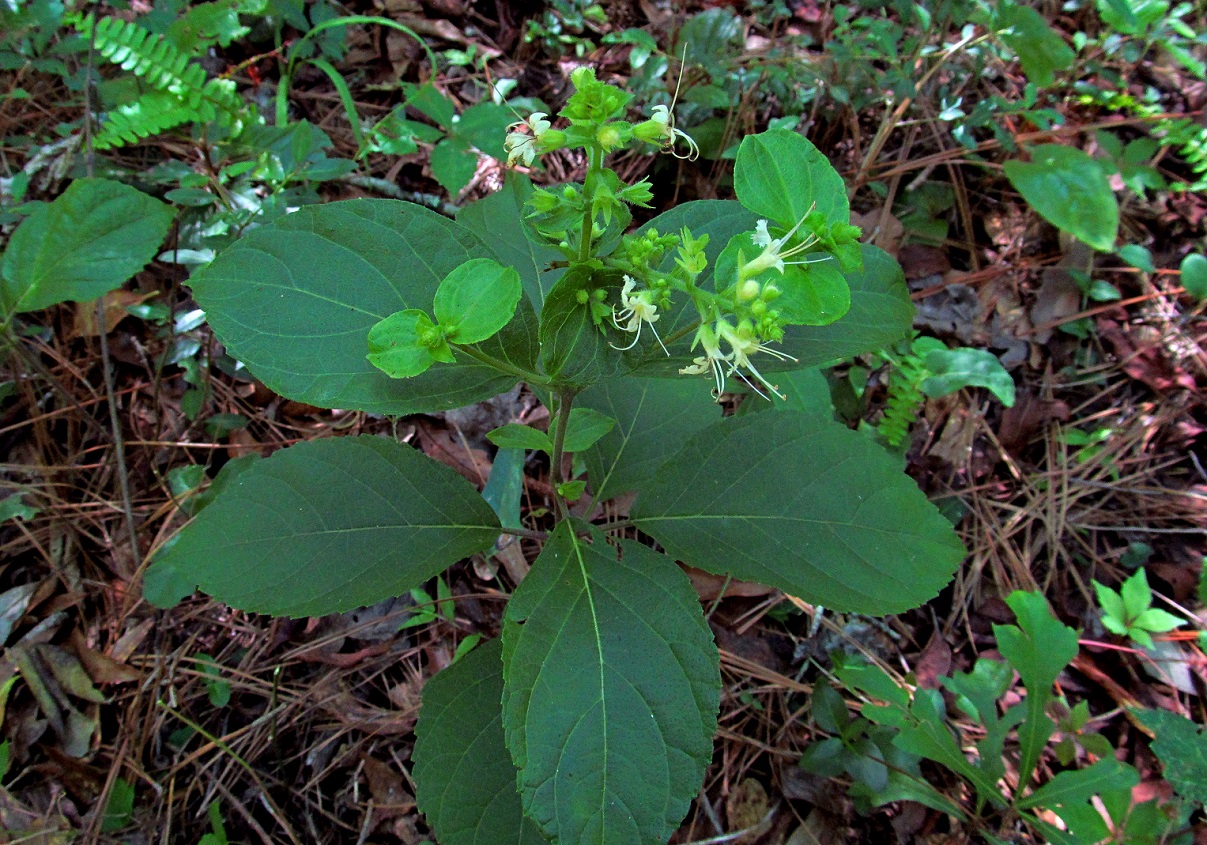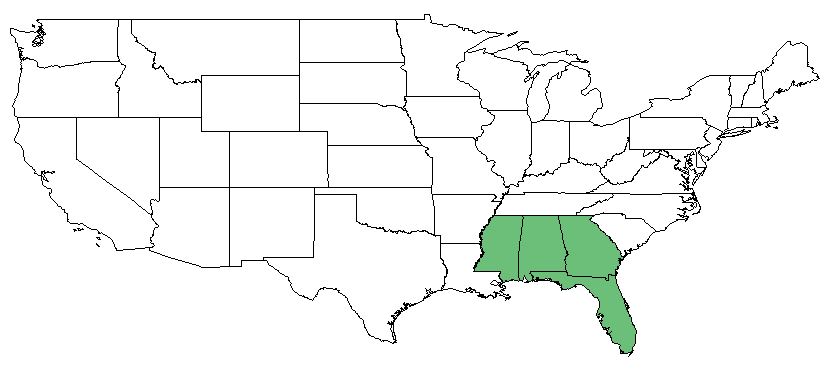Difference between revisions of "Collinsonia anisata"
| Line 27: | Line 27: | ||
==Ecology== | ==Ecology== | ||
===Habitat=== <!--Natural communities, human disturbed habitats, topography, hydrology, soils, light, fire regime requirements for removal of competition, etc.--> | ===Habitat=== <!--Natural communities, human disturbed habitats, topography, hydrology, soils, light, fire regime requirements for removal of competition, etc.--> | ||
| − | < | + | ''C. anisata'' is found in rich forests.<ref name="Weakley 2015"/> |
| + | |||
| + | ===Phenology=== <!--Timing off flowering, fruiting, seed dispersal, and environmental triggers. Cite PanFlora website if appropriate: http://www.gilnelson.com/PanFlora/ --> | ||
| + | In the southeastern and mid-Atlantic United States, ''C. anisata'' flowers from late July through September and fruits from September through October.<ref name="Weakley 2015"/> | ||
<!--===Seed dispersal===--> | <!--===Seed dispersal===--> | ||
<!--===Seed bank and germination===--> | <!--===Seed bank and germination===--> | ||
Revision as of 17:10, 14 February 2018
| Collinsonia anisata | |
|---|---|

| |
| Photo by the Altas of Alabama Plants Database | |
| Scientific classification | |
| Kingdom: | Plantae |
| Division: | Magnoliophyta - Flowering plants |
| Class: | Magnoliopsida - Dicots |
| Order: | Lamiales |
| Family: | Lamiaceae |
| Genus: | Collinsonia |
| Species: | C. anista |
| Binomial name | |
| Collinsonia anisata Walter | |

| |
| Natural range of Collinsonia anisata from Weakly [1] | |
Common Names: southern horsebalm; anise horsebalm[2]
Contents
Taxonomic Notes
Synonyms: C. canadensis var. punctata; C. punctata[2]
Description
Distribution
Ecology
Habitat
C. anisata is found in rich forests.[2]
Phenology
In the southeastern and mid-Atlantic United States, C. anisata flowers from late July through September and fruits from September through October.[2]
Conservation and Management
Cultivation and restoration
Photo Gallery
References and notes
- ↑ Weakley, Alan S. 2015. Flora of the Southern and Mid-Atlantic States: Working Draft of 21 May 2015. University of North Carolina, Chapel Hill, North Carolina. 1320 pp.
- ↑ 2.0 2.1 2.2 2.3 Weakley AS (2015) Flora of the Southern and Mid-Atlantic States. Chapel Hill, NC: University of North Carolina Herbarium.